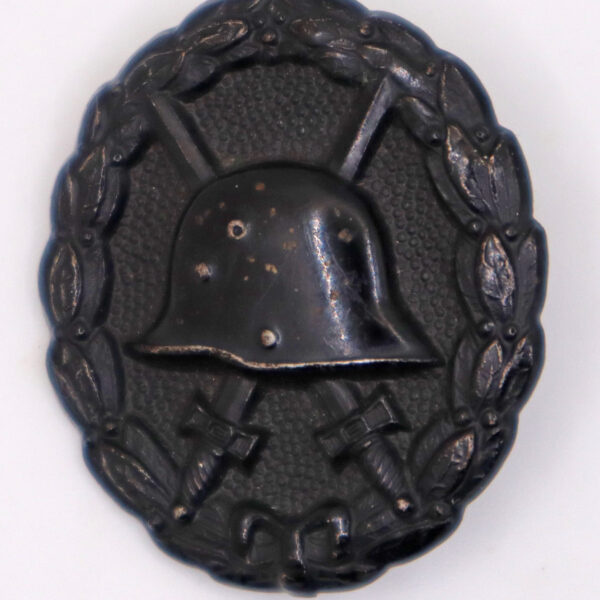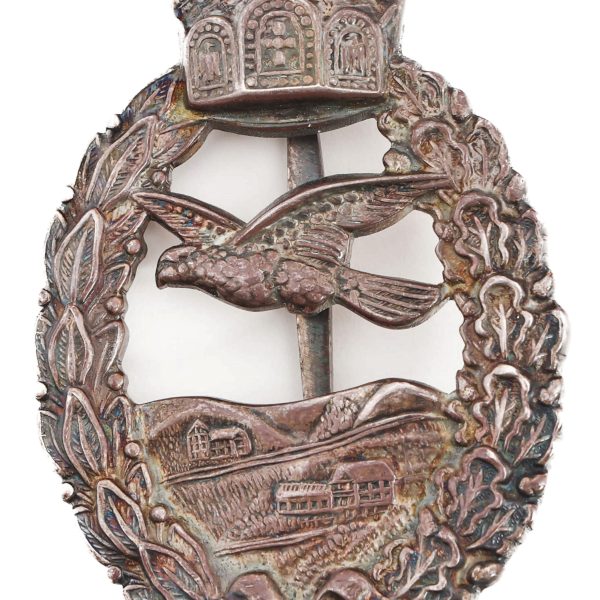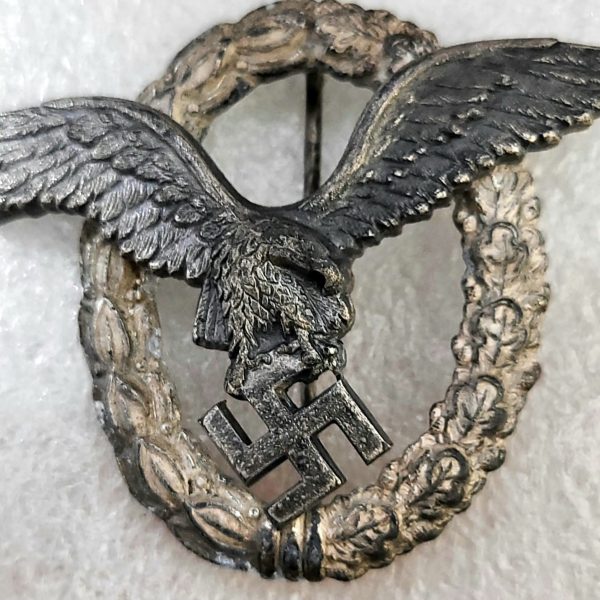Maker: Unknown
Height: 49.5mm
Width: 31.3mm
Weight: 5.36g
Materials: Gilded Silver or Gilt Bronze
This is a Gorgeous Prinzen Size WWI Imperial German Naval Land Pilot Badge
Non-Maker-marked in either Gilded 925 Silver or Gilt bronze, nice details look better in hand. The badge has worn through on high points.
Published in Baldes, page 457 (listed as non-maker-marked).
Though this badge on page 457 has a different backing, the obverse is exact, meaning this maker made this style badge with different variations to the rear but the same die was used to make both badges.
History:
An air force branch under the control of the German Navy was formed by decree of Emperor Wilhelm II on June 1, 1913. Its tasks were mainly reconnaissance-related and confined to the North Sea and Baltic areas. Some naval air force support was granted to the Ottoman allies, namely in the Black Sea area, including the Dardanelles. This does not mean, however, that they weren’t involved in combat with enemy planes and ships. About half of all naval airplanes were destroyed or damaged beyond repair during the war.
Naval air force personnel numbers have been given at just over 16,000, with just over 2,000 of them trained pilots and observers.
The Naval Land Pilot Badge was approved by Emperor Wilhelm II on February 23 and instituted on March 7, 1915. It was initially made of silver gilt and worn in the center of the left breast. The badge was awarded to those who passed their naval pilot exams and fulfilled all required qualifications. Naval land pilots were exclusively stationed in Flanders (Belgium) to protect the flank of the Western front.
Just like the regular Pilot Badge of the Air Force, the Naval Land Pilot Badge features a wreath made from laurel on the left and oak leaves on the right, with a bow at the bottom and an Imperial crown at the top. The difference is in the center, which features an eagle flying to the viewer’s left, below it the coast of Flanders with the sea in the background, and above it the sun.
Badges measure approximately 45mm in width and 72mm in height. They weigh between 25 and 50g. The large variation is due to different materials and designs being used.
Early silver gilt badges between 1915 and 1916 were likely only produced by maker Hugo Schaper, whereas post-1916 badges were made by multiple makers. These badges, due to the shortages of the war, were usually no longer made in silver gilt but brass gilt instead.
On the reverse, silver Schaper badges feature a crown and crescent moon stamp on the left and “800” for the silver content on the right, although on some badges this is switched. They also often feature “H. Schaper” stamped onto the pin.
Post-1916 pieces by Schaper made of brass only feature the maker mark on the pin if they feature any marks.
Some badges were produced in a reduced size, the so-called “Prinzen” size. These generally measure 30x48mm.
Due to the low numbers of naval pilots and naval land pilots in particular, this badge is only very rarely encountered today.



